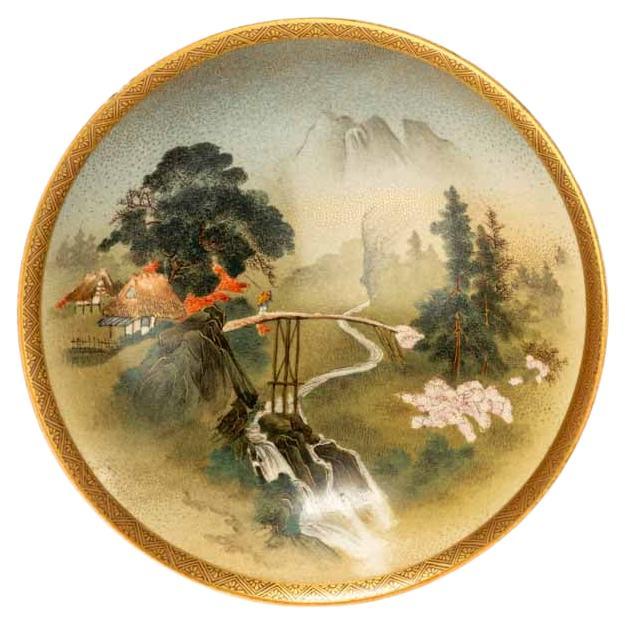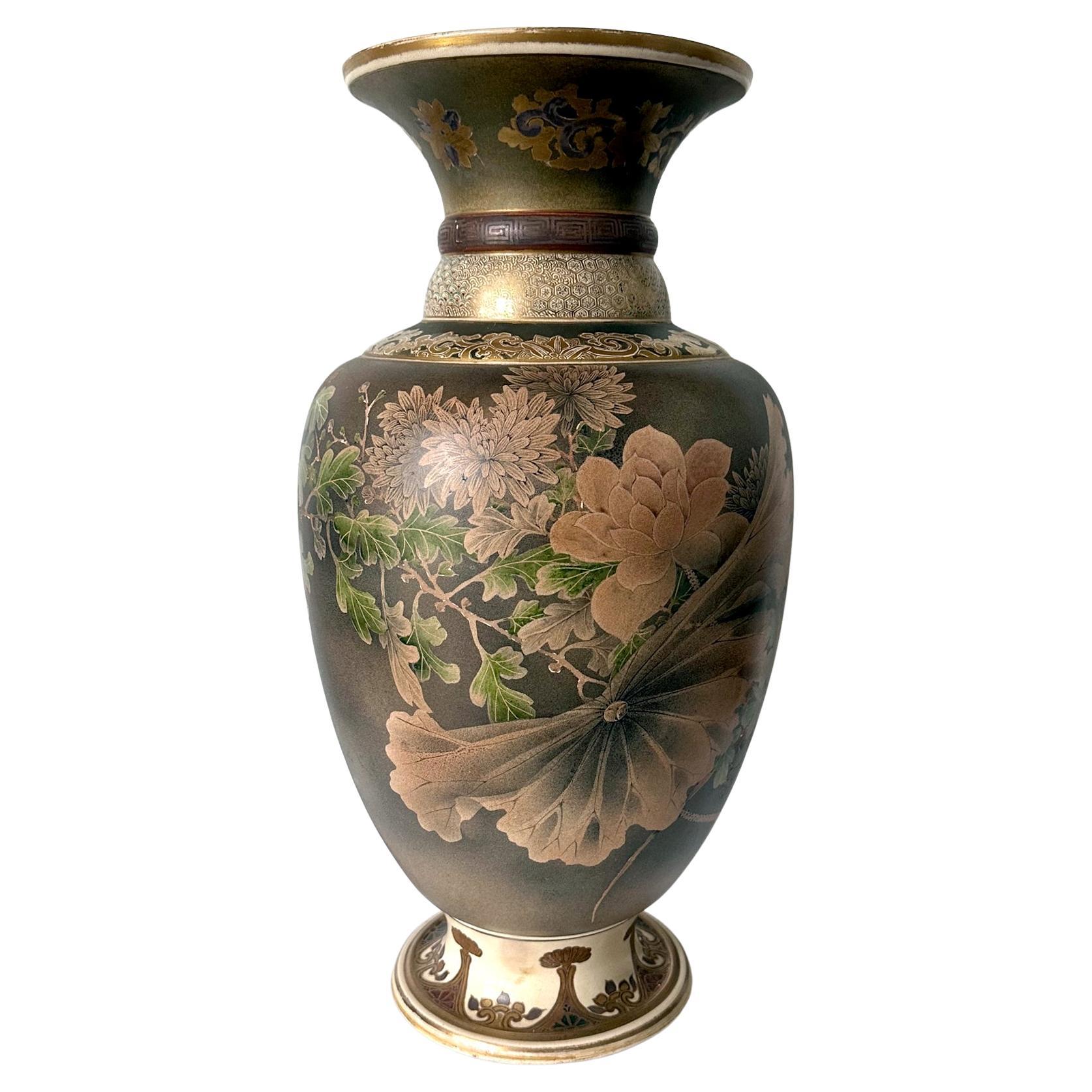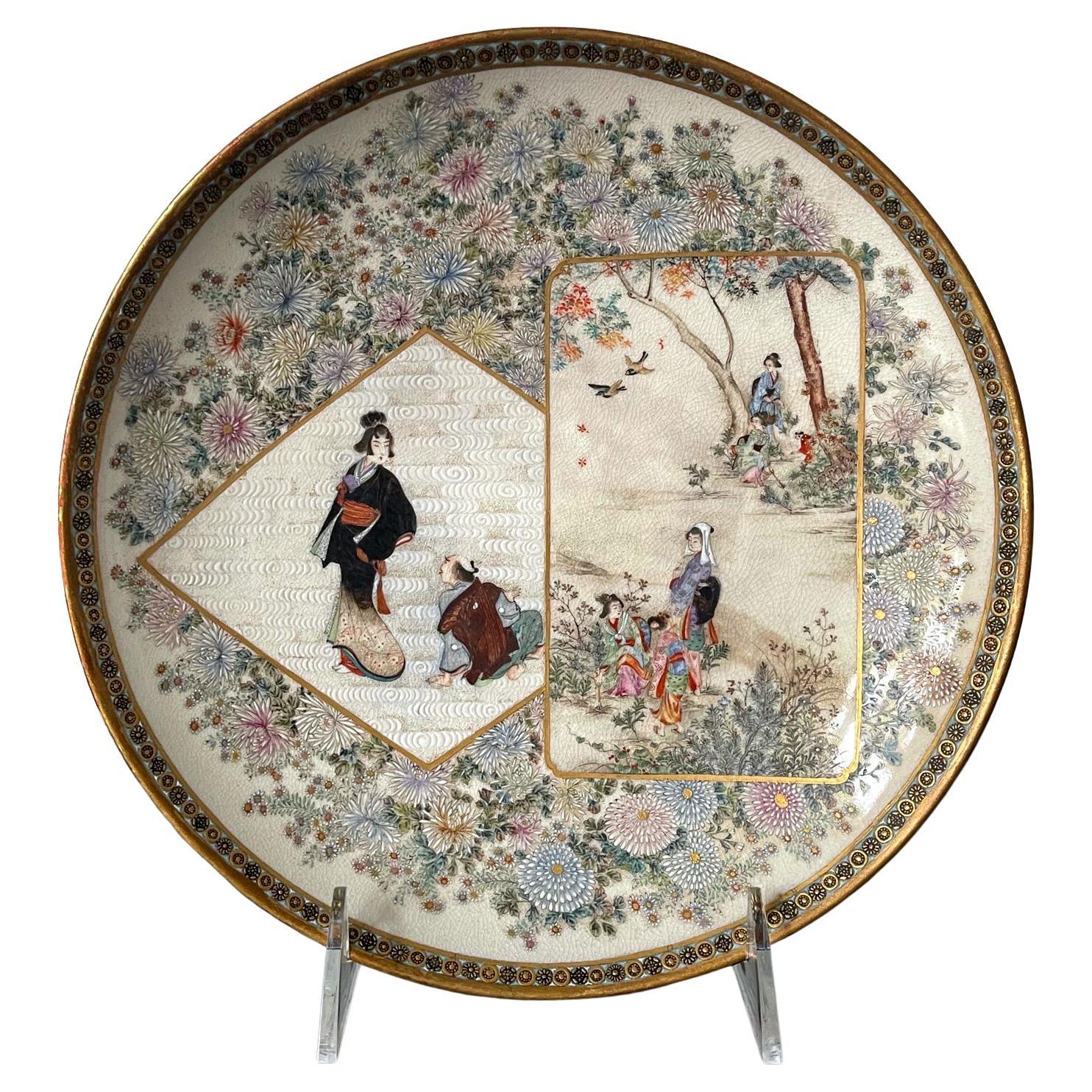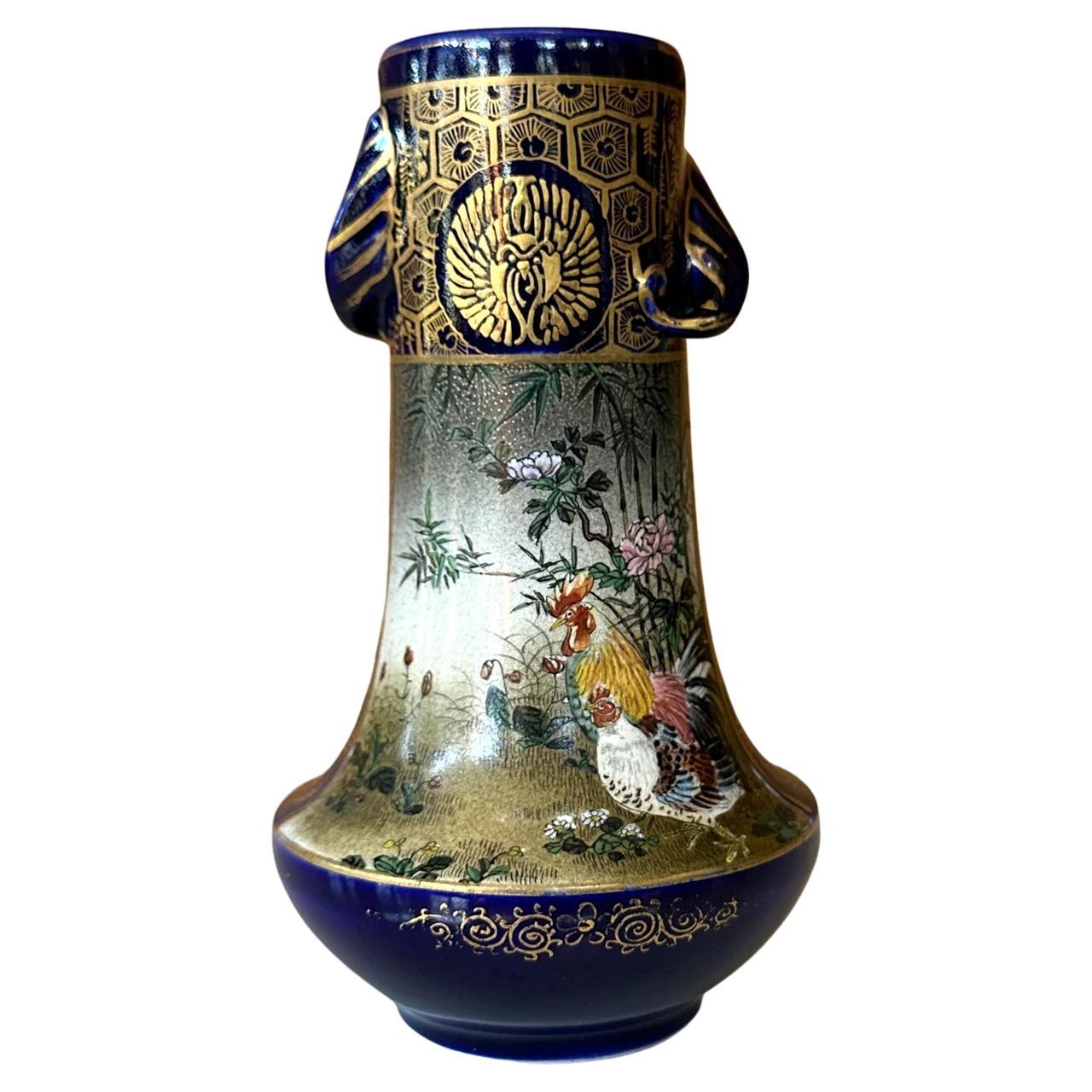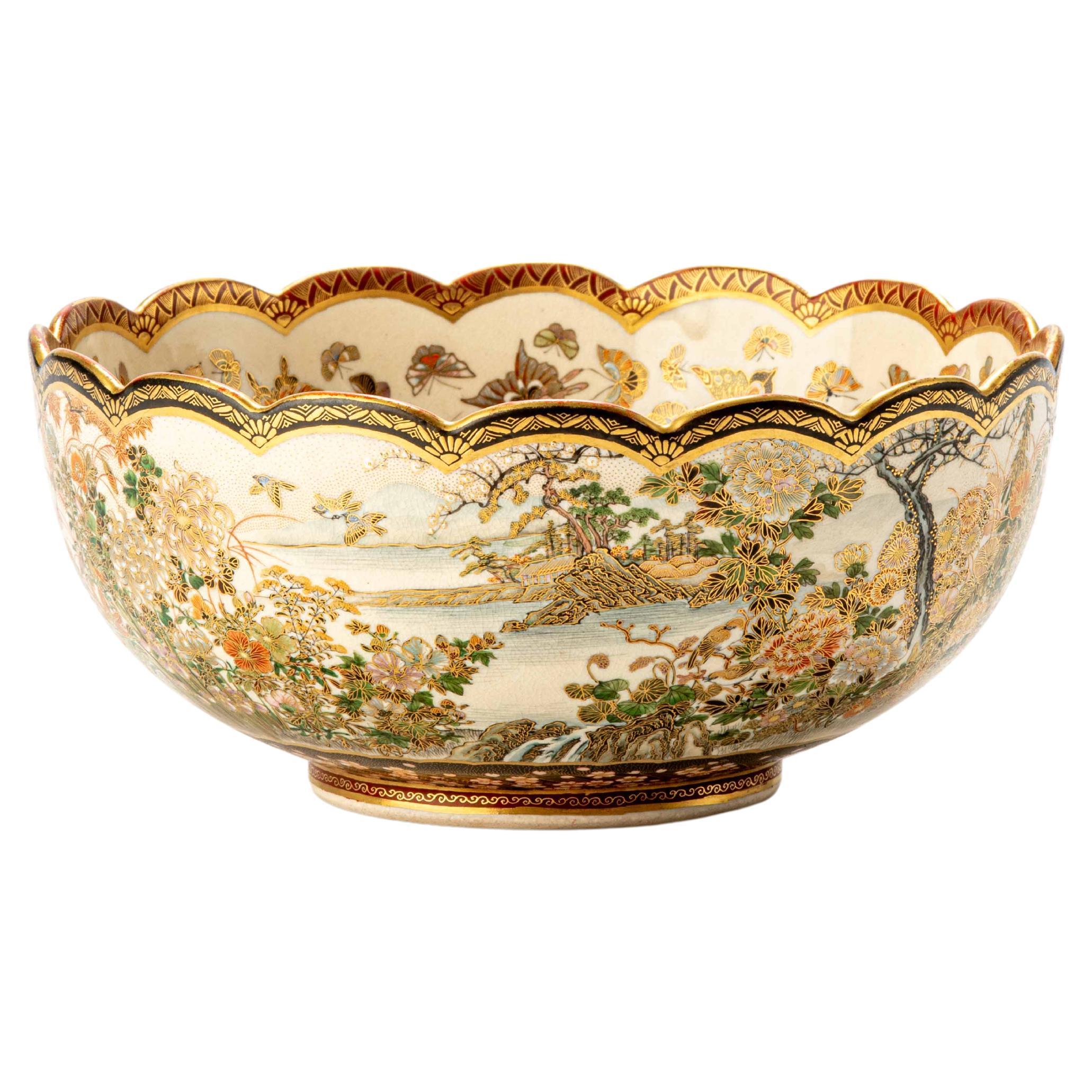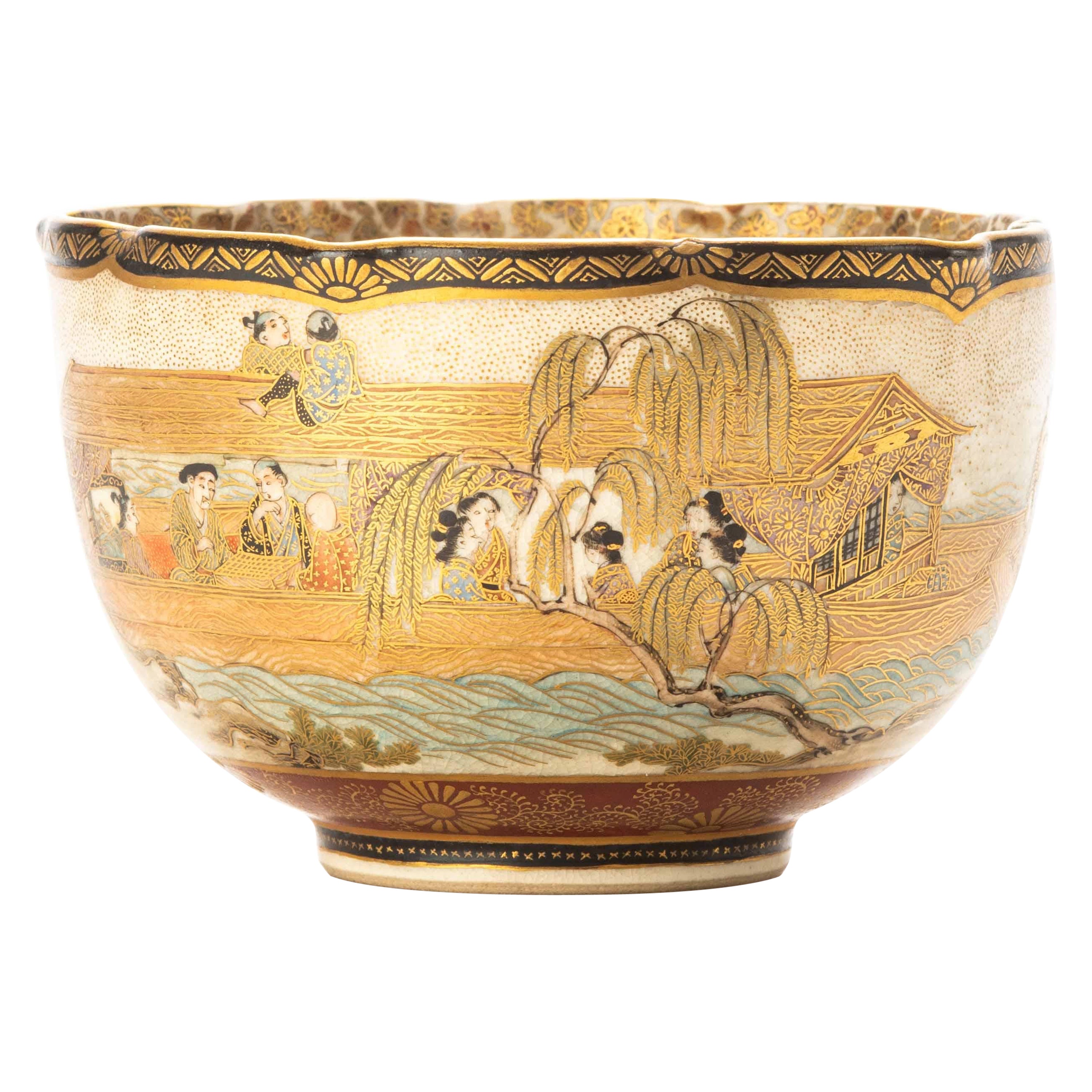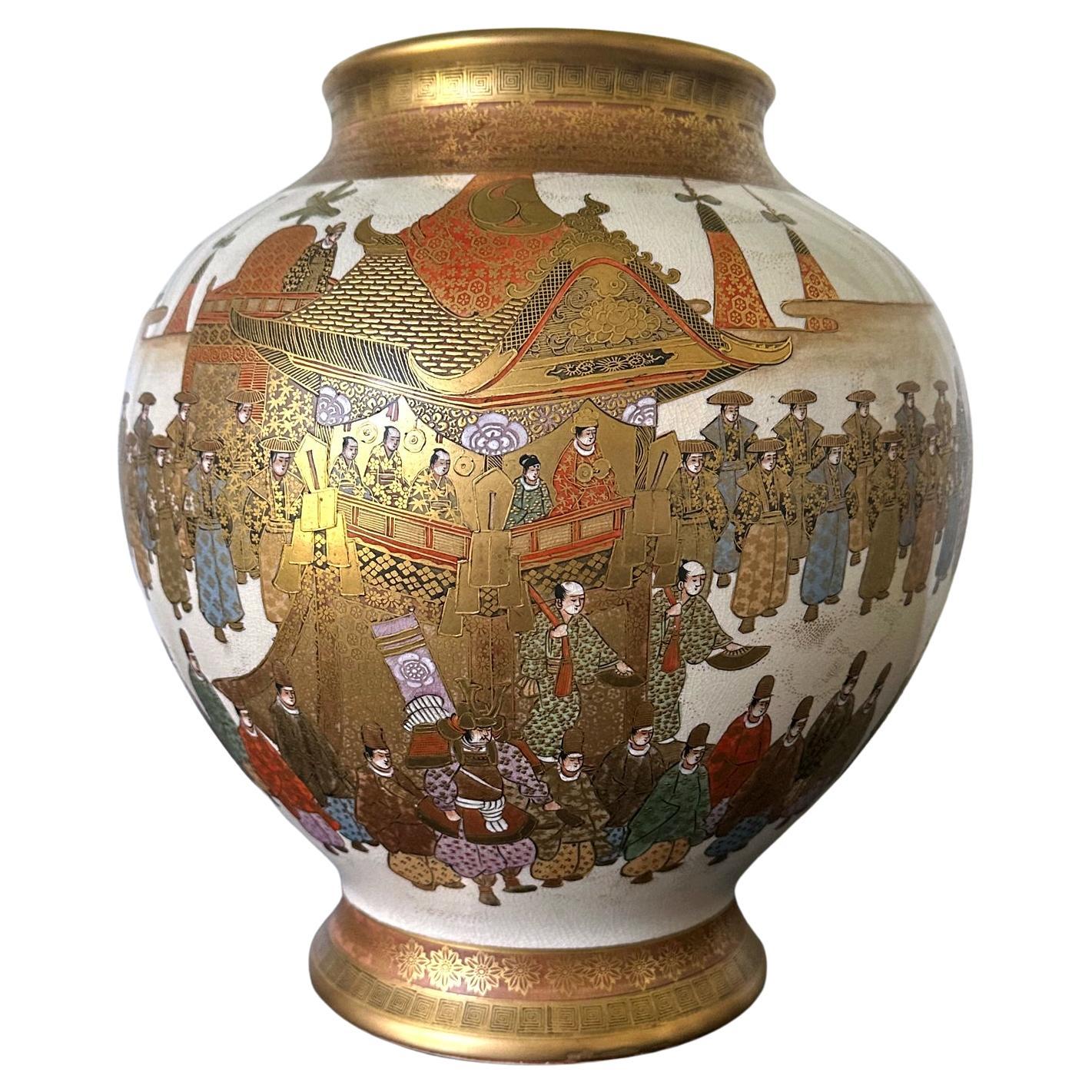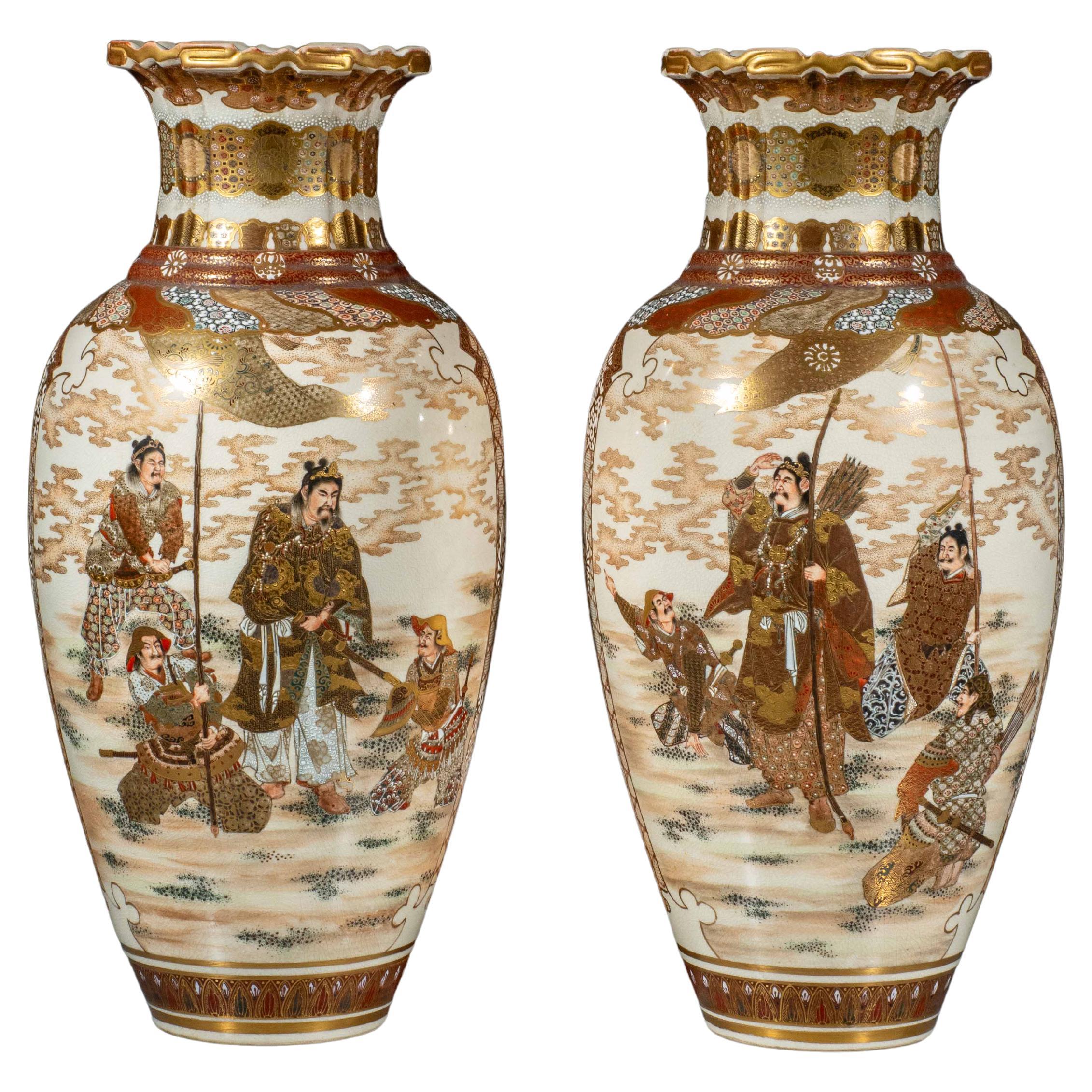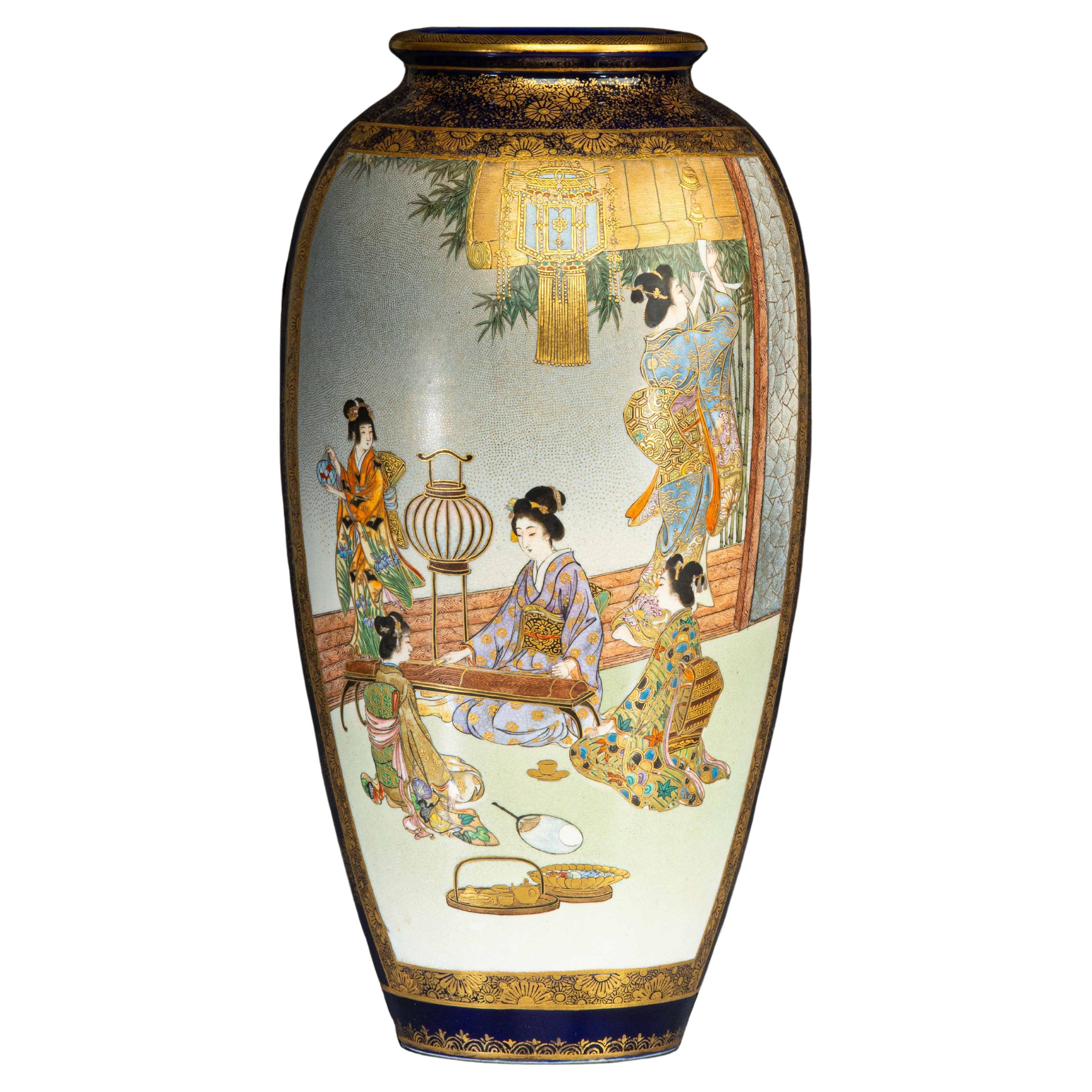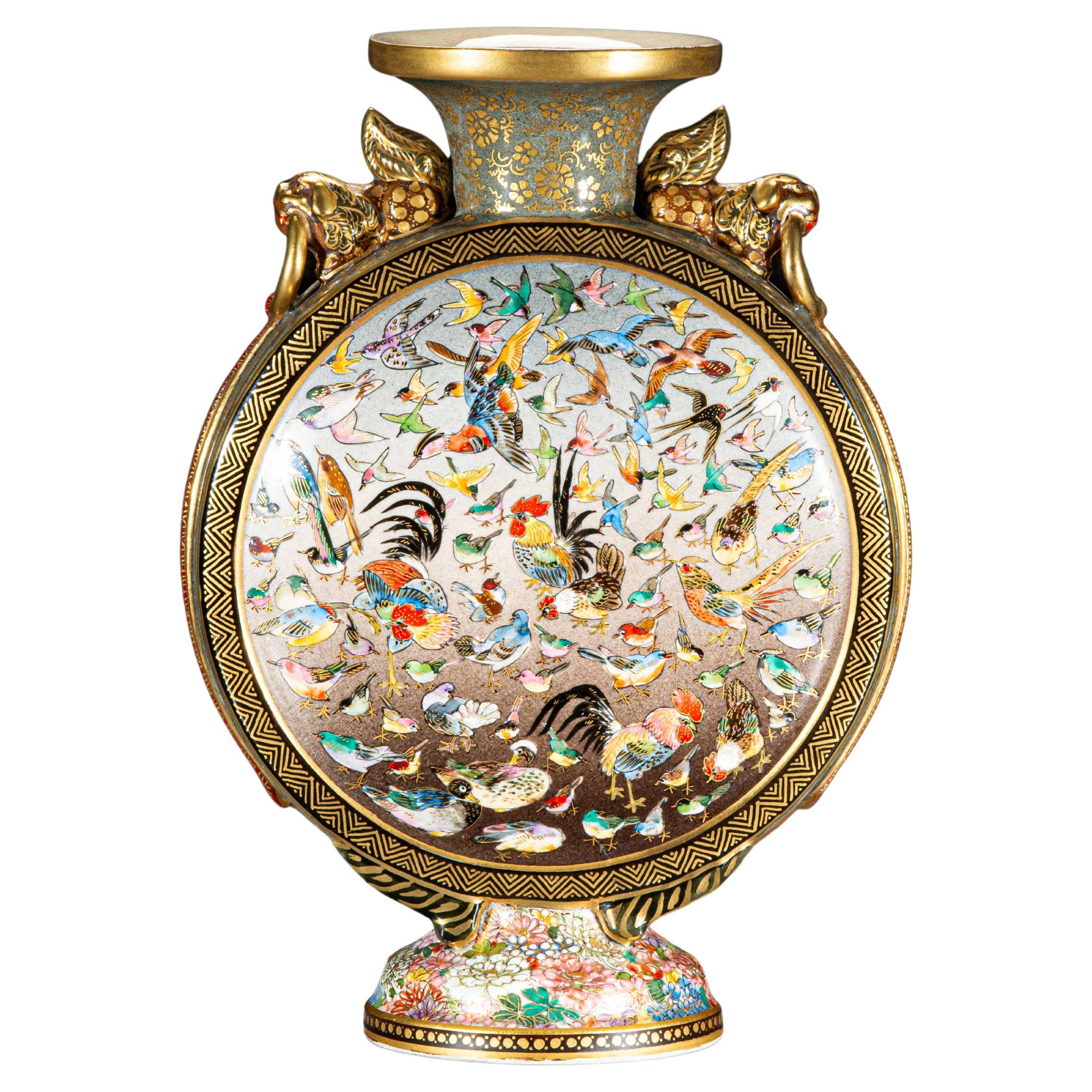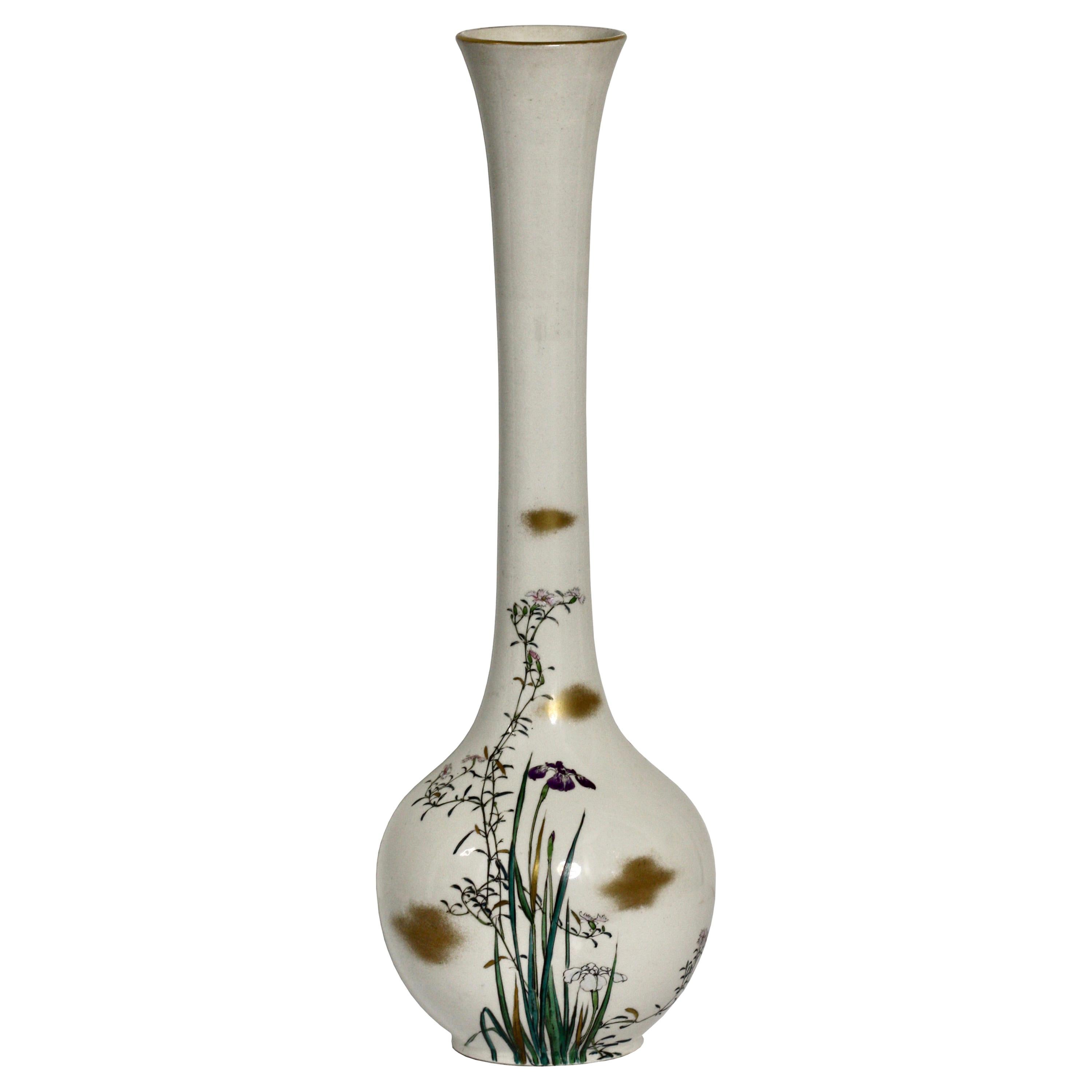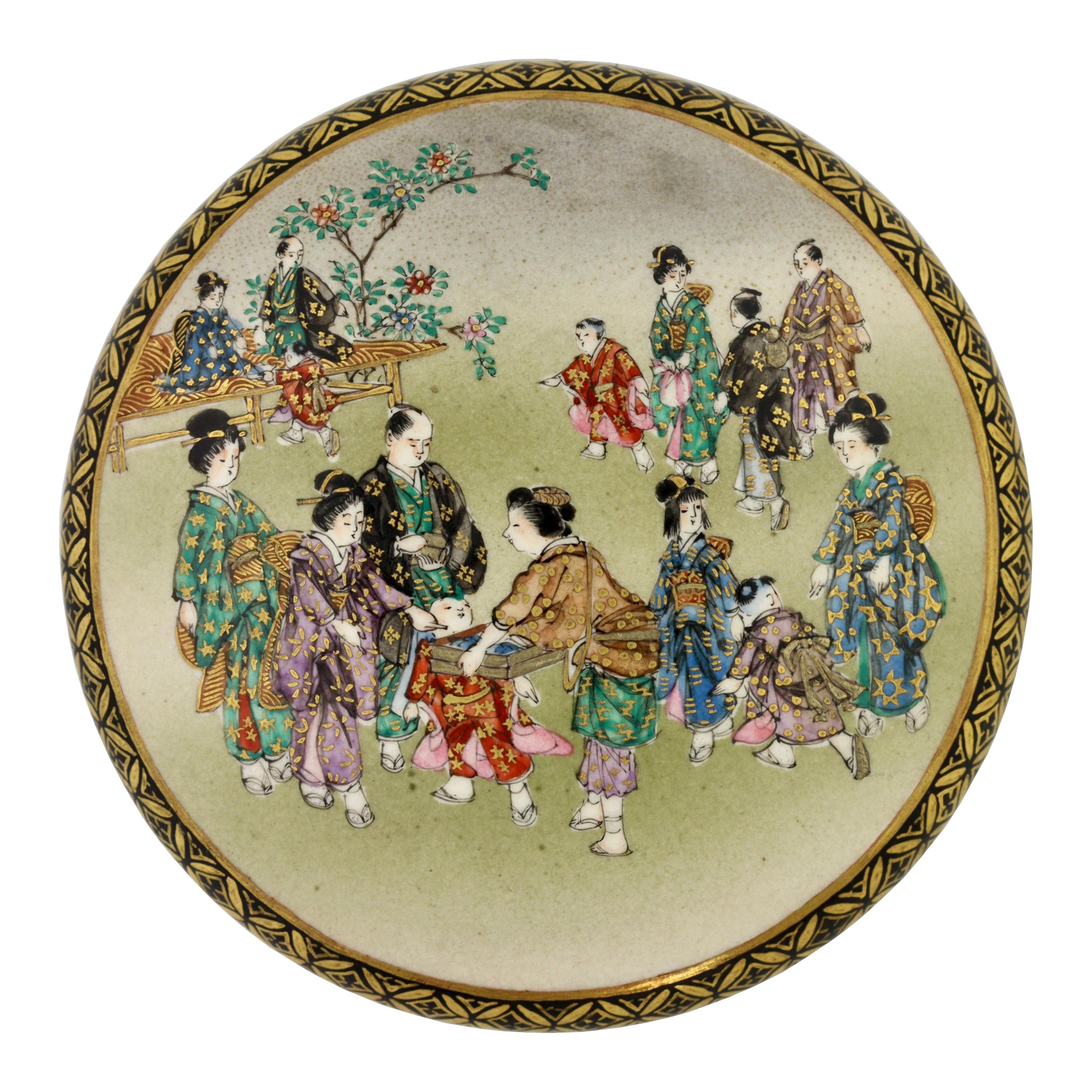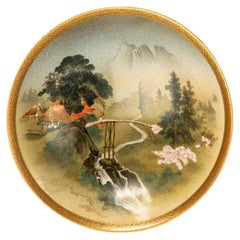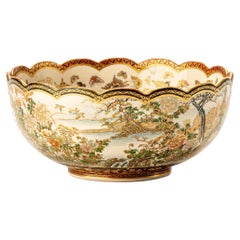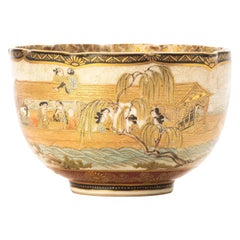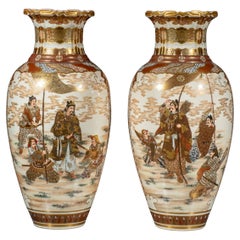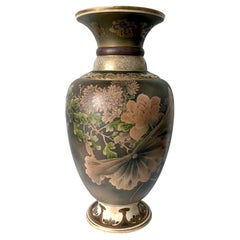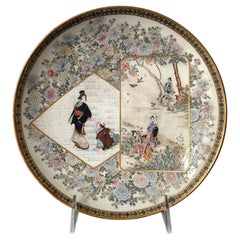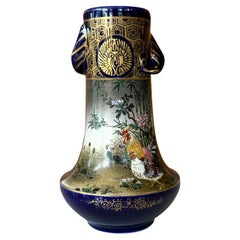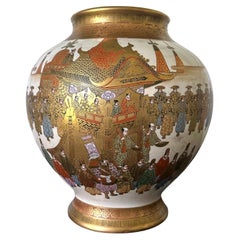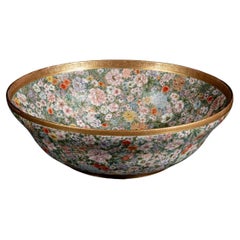
A Satsuma ceramic bowl decorated with a millefiori motif, signed Kinkozan
View Similar Items
Want more images or videos?
Request additional images or videos from the seller
1 of 11
A Satsuma ceramic bowl decorated with a millefiori motif, signed Kinkozan
$2,540.12List Price
About the Item
- Dimensions:Height: 3.23 in (8.2 cm)Diameter: 10.24 in (26 cm)
- Style:Japonisme (In the Style Of)
- Materials and Techniques:
- Place of Origin:
- Period:
- Date of Manufacture:Meiji late 19th century
- Condition:Repaired. Refinished. Minor losses.
- Seller Location:Milano, IT
- Reference Number:1stDibs: LU9162241505572
About the Seller
No Reviews Yet
Recognized Seller
These prestigious sellers are industry leaders and represent the highest echelon for item quality and design.
Established in 2012
1stDibs seller since 2023
Typical response time: 4 hours
Authenticity Guarantee
In the unlikely event there’s an issue with an item’s authenticity, contact us within 1 year for a full refund. DetailsMoney-Back Guarantee
If your item is not as described, is damaged in transit, or does not arrive, contact us within 7 days for a full refund. Details24-Hour Cancellation
You have a 24-hour grace period in which to reconsider your purchase, with no questions asked.Vetted Professional Sellers
Our world-class sellers must adhere to strict standards for service and quality, maintaining the integrity of our listings.Price-Match Guarantee
If you find that a seller listed the same item for a lower price elsewhere, we’ll match it.Trusted Global Delivery
Our best-in-class carrier network provides specialized shipping options worldwide, including custom delivery.More From This Seller
View AllA Satsuma bowl decorated with a striking landscape
Located in Milano, IT
Satsuma bowl decorated with a striking landscape that evokes the beauty and serenity of the Japanese hills, with a gently flowing river surrounded by trees and mountains.
The bowl i...
Category
Antique 19th Century Japanese Japonisme Ceramics
Materials
Ceramic
$3,260 Sale Price
20% Off
Satsuma ceramic lobed bowl, signed Juzan under the base
Located in Milano, IT
Satsuma ceramic lobed bowl adorned with raised enamels and fine gold details, depicting a vibrant landscape within. Characters and traditional Japanese home...
Category
Antique Late 19th Century Japonisme Ceramics
Materials
Ceramic
$3,119 Sale Price
20% Off
A Japanese Satsuma ceramic lobed bowl
Located in Milano, IT
Satsuma ceramic lobed bowl with curved corners and embellished with a refined scene of daily life along a watercourse on the outside. The interior is adorne...
Category
Antique Late 19th Century Japanese Japonisme Ceramics
Materials
Ceramic
$3,213 Sale Price
20% Off
Pair of large Satsuma vases with imperial scenes, signed Kinkozan
Located in Milano, IT
Pair of large Satsuma vases signed Kinkozan, decorated with scenes inspired by Japanese imperial tradition, crafted with precision and embossed gold. One side of each vase depicts th...
Category
Antique Late 19th Century Japanese Ceramics
Materials
Ceramic
$7,277 Sale Price
20% Off
A Satsuma vase depicting daily life scene signed Kinkozan
Located in Milano, IT
Kyoto Satsuma vase with polychrome decoration on a cobalt blue background, embellished with gold floral motifs. A reserve shows scenes of daily life with Geisha in brightly colored k...
Category
Antique Late 19th Century Japanese Ceramics
Materials
Ceramic
$15,595 Sale Price
20% Off
Satsuma moon flask decorated with naturalistic motifs signed by Koshida and Zuizan
Located in Milano, IT
Satsuma Moonflask vase decorated with polychrome nature motifs within two circular, convex reserves, depicting roosters, ducks, and various birds. On the other side, a pair of pheasa...
Category
Antique Late 19th Century Japanese Ceramics
Materials
Ceramic
$13,988 Sale Price
20% Off
You May Also Like
Large Japanese Satsuma Ceramic Vase Kinkozan
By Kinkozan
Located in Atlanta, GA
A large Japanese ceramic vase from the end of Meiji period circa 1890-1910s by Kinkozan (1645-1927). One of the largest studio manufacturers of the export ceramics at the time based in Kyoto. In the typical style of satsuma made at the turn of 20th century, the vase is elaborately decorated with a rather unusual kinran-de (gold paint) and green enamel highlight on a mottled brown background. The painterly decoration depicts a large seasonal floral arrangement in a circular fashion. Besides the obviously superb craftsmanship, what sets this particular vase apart from many lower quality and mass-produced pieces is its tone-on-tone color pallet that is visually somber and the small and sensitive details that heralds the change of the seasons. When the viewer goes beyond the first casual glimpse of the blossom and foliage, one would notice that on the edges of certain leaves as well as along the stalks, there accumulates a very thin layer of the white dust that represents the frost. The flower in bloom are chrysanthemums. Despite of being splendid, they are the messengers of the autumn. The large lotus leaf was subtly rendered in a bended and slightly withered manner, just past its prime. Although the lotus is still in bloom, the prominent seed pod indicates it may be the last for the season. The sentimental capture of the change of the seasons is not unusual in Japanese art. This vase poetically represents such a subtle transition from summer to fall, perhaps depicting the very first frost.
The neck of the vase is also slightly unusual with two rolled rings...
Category
Early 20th Century Japanese Meiji Ceramics
Materials
Ceramic
Japanese Satsuma Ceramic Dish with Fine Decoration by Kinkozan
By Kinkozan
Located in Atlanta, GA
A satsuma ceramic dish made by Kinkozan studio circa 1980-1900s in the late Meiji Period. The dish with a thick robust wall is supported by a large ring base and features finely deta...
Category
Antique Late 19th Century Japanese Meiji Ceramics
Materials
Ceramic
Fine Japanese Ceramic Satsuma Vase by Kinkozan
By Kinkozan
Located in Atlanta, GA
A miniature Japanese ceramic vase from the end of Meiji period circa 1880s- 1910s by Kinkozan (1645-1927). One of the largest studio manufacturers of the export ceramics at the time ...
Category
Early 20th Century Japanese Meiji Ceramics
Materials
Ceramic
Fine Japanese Satsuma Ceramic Jar with Gilt Decoration by Kinkozan
By Kinkozan
Located in Atlanta, GA
A large Japanese ceramic vase from end of Meiji period circa 1880s- 1910s by Kinkozan (1645-1927). One of the largest studio manufacturers of the export ceramics at the time based in Kyoto. In the typical style of satsuma made at the turn of 20th century, the vase is of a moon jar shape and finely decorated with kinran-de (gold paint) on a cream white background with even fine crackles. What sets this particular vase apart from many lower quality and mass-produced pieces is the meticulously renditioned surface decoration. Lavishly gilded with a continuous design, the carefully composed imagery depicts an elaborately decorated float cart in a festival parade. A group of people are seated within the float with a woman and a child standing in the front. Surrounding the float are streams of marchers dressed...
Category
Early 20th Century Japanese Meiji Ceramics
Materials
Ceramic
Kinkozan, Japanese Satsuma Vase, Meiji Period
By Kinkozan
Located in West Palm Beach, FL
Kinkozan, Japanese Satsuma vase,
Meiji Period (1868-1912)
Of baluster form with an elongated neck decorated in polychrome enamels and gilt on a clear crackle glaze in an Art-Nouvea...
Category
20th Century Ceramics
Materials
Ceramic
Satsuma Earthenware Covered Box, by Kinkozan
By Satsuma
Located in West Palm Beach, FL
A Satsuma Earthenware covered box,
by Kinkozan,
Japanese, Meiji period (1868-1912)
decorated in polychrome enamels and gilt over a clear, crackled glaze, delicately painted with s...
Category
Antique Early 1900s Ceramics
Materials
Earthenware
Recently Viewed
View AllMore Ways To Browse
Millefiori Bowl
Peony Ring
Hydrangea Antique
Satsuma Bowl
Japanese Satsuma Bowl
Antique Satsuma Bowl
Satsuma Chrysanthemum
Meiji Satsuma Bowl
Antique Azaleas
Satsuma Wisteria
Japanese Sake
Qianlong Famille Rose
Old Imari
Satsuma Earthenware
Kutani Meiji
Chinese Dragon And Phoenix
Chinese And Porcelain And Phoenix
Chinese Porcelain Phoenix
